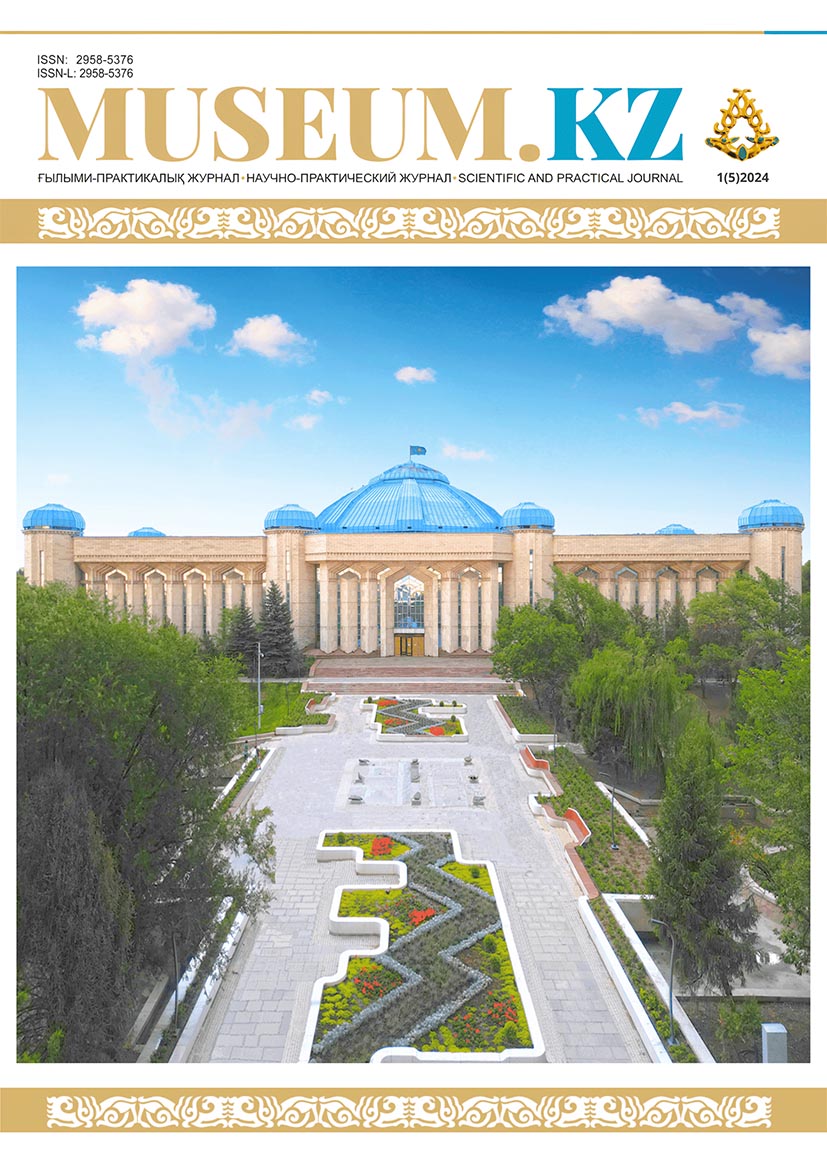HISTORY OF FORMATION OF THE COLLECTION OF THE GOLDEN HORDE PERIOD IN THE ARCHAEOLOGICAL FUND OF THE CENTRAL STATE MUSEUM OF THE REPUBLIC OF KAZAKHSTAN
DOI:
https://doi.org/10.59103/muzkz.2024.05.01Keywords:
Central State Museum of the Republic of Kazakhstan, Golden Horde, archeology, fund, artifacts, collectionAbstract
The article presents the history of the formation of the archaeological collection of the Golden Horde period of the Central State Museum of the Republic of Kazakhstan (hereinafter referred to as the Central State Museum of the Republic of Kazakhstan). The archaeological collection was formed at the late 19th – the early 20th cc. from the collections of Orenburg Scientific Commission and the Semirechensk Regional Museum. A brief historiographical overview of the study of archaeological artifacts is given, and the significant contribution to the collection of that time by such famous researchers as J-A. Castanet, N.N. Pantusov and F.V. Poyarkov is noted. Over a hundred-year period, the museum's funds were replenished as a result of the work of archaeological expeditions, from «treasures», or accidentally discovered complexes. One of the largest collections on the history of the Golden Horde consists of materials from Saraichik settlement: red clay unglazed ceramics, as well as bowls, cups, plates, tagores, amphora-shaped vessels and khums. In addition to ceramics, at least four large hoards of coins were found in the city. Random finds include unique artifacts: a lamp stand from Zhetysu, a Talgar treasure of two copper dishes and three porcelain bowls, a basin from the Koylyk settlement, a Chirag from the Ilibalyk settlement, and fragments of silk clothing from a burial near the village of Shengeldy, as well as materials from the archaeological expedition of the Central State Museum of the RoK, mound No. 7 of the Akterek burial ground (Almaty region).
Material and research methods. The research material was the archaeological collection of the Golden Horde period from the funds of the Central State Museum of the Republic of Kazakhstan. The study was carried out on the basis of an analysis of collection inventories of the archeology department, acceptance certificates and the receipt book of the Central State Museum of the Republic of Kazakhstan.
The research methodology is based on scientific approaches and principles; the following were used: logical, systemic, complex, comparative historical and retrospective, involving a theoretical and field study of the process of museumification of artifacts. The work is based on an integrated approach to the object of study. A comparative typological method was used to analyze the main categories of archaeological material. When establishing the relationship of objects, methods of classification and systematization were used. For a systematic description of the artifacts, a formal typological method of studying the iconography of images, supplemented by stylistic analysis, was used. Using the comparative method, common and special features of artifacts were identified. To identify historical and archaeological connections, the historical-comparative method was used. Chronological attribution of collections was carried out using relative and absolute dating.







